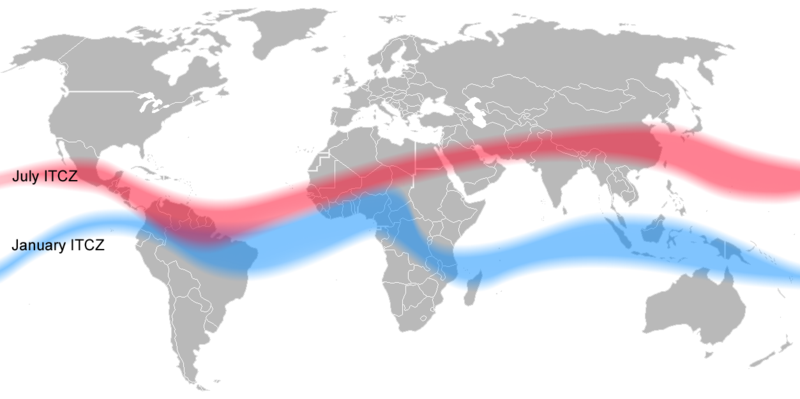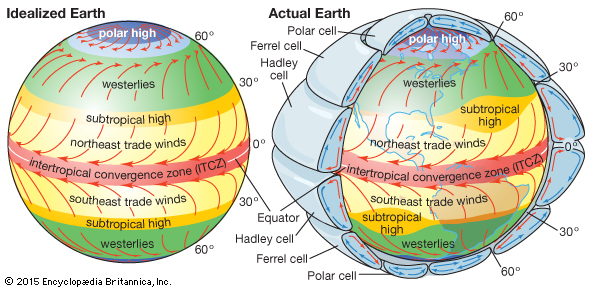By Julia Rothchild
Russians don’t usually worry about monsoons. But a new study says maybe they should. Research suggests that deforestation in the far north could significantly impact South Asian monsoon rainfall.
The study, published last month in the Proceedings of the National Academy of Sciences, used an idealized climate model to show how cutting down trees at high latitudes might change monsoon circulations.
The researchers found that heavy deforestation would shift what is called the Intertropical Convergence Zone (ITCZ) towards the south. The ITCZ is a band of clouds and precipitation circling the globe where the northeast and southeast trade winds converge and rise. It hovers near the equator, but migrates hundreds to thousands of miles north and south of the equator during the course of the seasonal cycle. The ITCZ’s movement determines where and when monsoons occur.
The ITCZ lies north of the equator during June, July, August, and September, when the northern hemisphere’s summer occurs and the warm, rising air lies in the northern hemisphere. During that time, monsoons occur north of the equator. In December, January, February, and March, the ITCZ moves south, and showers the southern hemisphere with monsoon rain during its summer.
Deforestation would push the ITCZ south by providing a remote forcing. Cutting down dark green forests exposes land, and bare land reflects more sunlight than the original forests. In other words, deforestation increases the albedo of the Earth’s surface. The result is less solar absorption, and an energy deficit in the northern hemisphere’s high latitude systems. This causes the ITCZ to shift away from the imposed energy sink.

The idea that the ITCZ might move to the north or south in response to a high-latitude heat source or sink is not new. Numerous studies have shown that an expansion of reflective ice cover in the northern hemisphere would shift the ITCZ southward. It is thought that the decades-long drought in Africa’s Sahel resulted from a southward shift in Africa’s monsoon precipitation, which was caused by temperature changes in the Atlantic Ocean – cooling north of the equator, and warming south of it. These and other studies relating shifts in tropical precipitation to cross-equatorial gradients in energy sources were reviewed here.
A southward shift of the ITCZ would mean that many places in the northern hemisphere that rely on monsoon rains would receive less precipitation. These places include North America, North Africa, and South Asia. In the study’s ideal climate model, northern deforestation causes the rainfall over India in particular to decline by 18%. Correspondingly, the southern hemisphere monsoon regions – South Africa, South America, and Australia – would experience a precipitation increase. It should be noted that the model assumed drastic, major deforestation, in which all trees north of 50 degrees latitude were eliminated and replaced by grasses. But in places that rely on monsoons for life, even a precipitation change of less than 18% would have major impacts on livelihood: droughts and floods plague India when the summer rainfall is only ten percent weaker or stronger than usual.
The study found that far-away deforestation actually has more of an impact on the South Asian monsoon region than does local land surface changes in South Asia. In other words, land changes in India might have less effect on Indian monsoons than deforestation in Russia. We focus on Russia because that particular country has the most forested area of any state on Earth. About 20,000 square kilometers in Russia alone are deforested every year.

The upshot is that people living in India might have less environmental control over the monsoons than people in Russia. This seems not only unintuitive, but politically inconvenient: the people who may be most affected by northern latitude deforestation – Indians, for example – have little say in its occurrence.
The idea that land surface albedo changes might affect monsoons is not new, and it is unclear whether realistic amounts of deforestation would have an appreciable effect on monsoons. Still, this study emphasizes the truly global nature of climate change issues. Maintaining a climate that is healthy for human populations cannot be accomplished by one country alone.
